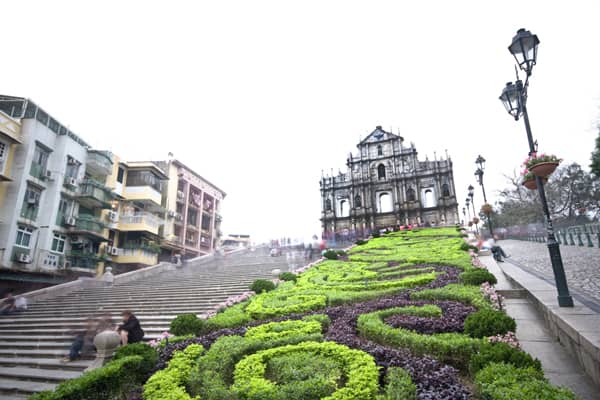 Hong Kong Tourist Board
Hong Kong Tourist BoardContrary to popular belief, there’s more to this cosmopolitan city than tall buildings, great cuisine and shopping malls. With over 200 islands, more than 70 per cent of Hong Kong’s total land area remains undeveloped and includes rolling hills, coastal plains and rock formations.
Walk On
Several scenic walks along groomed paths lie beyond the tram station area at The Peak. Among them is the former route used by coolies carrying sedan chairs.
In Pui O, Lantau Island, narrow, concrete footpaths lead through former paddy fields, now grazing pastures for water buffalo. South Lantau’s stone trails date back several hundred years.
On car-free Cheung Chau island, there are winding trails through headlands and hills along the southeastern section. In the southwest, a path drops down towards Cheung Po Tsai Cave, named after a pirate rumoured to have stashed his booty there.
Nature’s Bounty
Covering 460 hectares, Tai Po Kau Nature Reserve is a reforested area with more than 100 tree species, and native flora like Sweet Gum and Fragrant Litsea. Barking deer, pangolin, civet cat and 12 bird species including Chinese Bulbul and Black Drongos are just some of the species found here. The reserve has an excellent trail system.
Starting out as shrimp ponds dug from the mangroves, Mai Po Nature Reserve is part of the Deep Bay wetland. Boardwalks and trails cut through the mangroves and mud flats. About 50,000 waterbirds winter in the bay.
Canadian Connection
Hong Kong’s historic link to Canada stems from the Second World War. Following the route of the action in the northern hills of Kowloon, the Gin Drinker’s Line was the first line of defence for the Allied forces against the Japanese invaders. Bullet marks dot the entrance to remaining defensive bunkers.
Popular with picnickers, Shing Mun Redoubt was the command and supply centre of the Gin Drinker’s Line. From the parking lot, head upwards through tropical bush to MacLehose’s Trail Stage Six. Hidden amid the thick undergrowth are the entrances to tunnels that connect defensive positions on the line. The remains of a machine gun post sits at the top of the path.
In the rugged hills above Hong Kong lies a small dirt lot at the side of the twisty Wong Nai Chung Gap Road. A path leads to a clearing atop what’s left of concrete footings that supported an anti-aircraft battery. The ground then dips into a lush valley that the Japanese regarded as “an essential route to reach the city centre”. This, Jardine’s Lookout, ridge was used as a defensive vantage point. The Canadian regiment from the Winnipeg Grenadiers was stationed here.
 Hong Kong Tourist BoardMove On To Macau
Hong Kong Tourist BoardMove On To MacauMacau lies about an hour’s ferry ride away from Hong Kong. Another S.A.R. of China, this former Portuguese colony features an eclectic mix of western and eastern civilizations. Its historic buildings date back to the early 13th century.
Some highlights:
• Guia Fort (1637): Built on the highest point in Macau. In 1865, a lighthouse was erected here.
• Pousada de Sao Tiago hotel: Formerly the Barra Fort or Fortress of S Tiago da Barra (1629), it retains the original walls, chapel and trees.
• St Paul’s: A stone facade and the grand staircase are all that remain of the church. Built in 1602, the facade is commonly used as a backdrop for many kung fu movies.
• Kum Iam Temple: Dedicated to the goddess of mercy and one of the wealthiest temples in Macau. Numerous porcelain figures line the entrance gate and roofs.
• Lin Fun Miu: Built in 1592, this temple’s façade features intricate clay bas-relief depicting historical and mythological figures.
• Macau Museum: Provides a glimpse into Macau’s heritage. Situated below Monte Fort and linked to St. Paul’s ruins via an underground tunnel.
• Taipa House Museum: Showcases the Eurasian community – the intermarriage of Portuguese and Chinese.
• Macau Grand Prix: Famous street race with some harrowing corners. The Grand Prix Museum has a comprehensive array of paraphernalia including cars and bikes donated from past racing greats.


